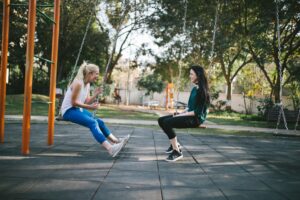By Prof Tony Atwood and Dr Michelle Garnett
Introduction
There is an association between autism and difficulties falling asleep, staying asleep and the quality of sleep, for autistic individuals of all ages (Bishop-Fitzpatrick and Rubenstein 2019; Stewart et al 2020). A review of research on autism and sleep confirms that between 44% and 86% of autistic children and adults have sleep issues that includes a delay in falling asleep, waking multiple times and difficulty returning to sleep and less duration of sleep when compared to age peers. (Johnson and Malow 2008; Wintler et al 2020). Insomnia is considered as a comorbidity to autism but may be an integral part of autism.
Sleep profile associated with autism
The anticipated time to fall asleep (sleep onset latency) for typical adolescents and adults is less than 30 minutes but around 12 minutes longer (over 40 minutes) for autistic teenagers and adults (Jovevska et al 2020).
During childhood there can be resistance to going to bed and the development of elaborate bedtime routines to relax and facilitate sleep that can become more complex and take longer to complete (Stewart et al 2020).
Our clinical experience is that racing thoughts and ruminating can inhibit falling asleep for autistic adolescents and adults. A coping strategy is engaging in computer games and electronic media as a thought blocker for anxious or depressive thoughts. This strategy will affect sleep onset in terms of the thoughts and emotions returning when the computer game is switched off and there is the thought ‘void’ when the light is switched off.
We recognise five stages of sleep, namely Stages 1-4 and Rapid Eye Movement (REM) sleep. Research has indicated that autism is associated with less slow wave sleep, that is Stages 3 and 4 (Lambert et al 2016) and a disturbance of REM sleep. REM sleep is more prevalent at the end of the night or early morning and is a time when there are random eye movements, a propensity to dream vividly and the brain is more active than at any time during the day. During REM sleep the brain processes the cognitive and emotional experiences of the day and stores thoughts and memories. An equivalent to a computer engaging in a ‘de-frag’ process. REM sleep in a typical child comprises around 23% of sleep time but only 15% in autistic children (Buckley et al 2010). Autistic children are likely to be chronically REM deprived.
The total duration of sleep of autistic children is likely to be less than their peers by between 17 and 43 minutes each day, shortened by later bedtimes and earlier waking, and characterised by waking 3 or more times in the night (Humphreys et al 2013). The shorter duration of sleep can also reduce the amount of REM sleep (Vermeulen et al 2021). Thus, the sleep profile associated with autism includes chronic sleep deprivation.
Effects of sleep deprivation
Sleep deprivation is not always expressed as feeling lethargic or sleepy during the day. Sleep deprivation can lead to hyperactivity rather than hypoactivity (Ming et al 2009). The sleep problems of autistic children and adolescents are associated with increased physical aggression, irritability and inattention (Mazurek and Sohl 2016). When sleep improves, there is an improvement in behaviour, attention span and mood.
Mature autistic adults who have sleep issues are more likely to have fragmented sleep, and longer daytime napping and report signs of depression (Stewart et al 2020).
Insomnia may increase stress levels and the risk for suicidal thoughts and relapse of a major depressive disorder. (APA 2022).
Parents of autistic children who have sleep problems are themselves more likely to have higher levels of stress, anxiety, depression, and fatigue (Hunter et al 2020).
Causes of sleep issues associated with autism
There are many causes of sleep issues for autistic children and adults. One of the major causes is one of the diagnostic criteria for autism, a hyper-reactivity to sensory experiences. Specific sensory experiences can create a startle response and considerable discomfort or pain which inhibits falling asleep. These can be sudden ‘sharp’ noises such as the sound of a distant dog barking or a high-pitched continuous noise such as the sound of a refrigerator in the kitchen. There can be tactile sensitivity to certain bed clothes and bed linen and light sensitivity in terms of the nature and degree of illumination. There can also be a sensitivity to the bedroom temperature and internal sensory experiences such as the sounds of digestion. Unfortunately, repeated exposure strategies, such as ‘just get used to it’ are not effective in reducing an autistic person’s sensory sensitivity.
Another significant cause of sleep issues is anxiety. There is an association between autism and high levels of chronic anxiety. Our clinical experience is that autistic individuals have great difficulty acquiring the ability to relax and self-sooth, which is needed to facilitate falling asleep. The coping strategies can include creating bedtime rituals to alleviate anxiety, blocking anxious thoughts by engaging in computer games and requiring a parent to be present to sooth and encourage relaxation when falling asleep and when waking in the night.
There are also medical and psychological causes of sleep issues. Recent research has suggested that there are gene mutations associated with autism that affect the production and levels of melatonin, a natural hormone that controls sleep onset (Yan and Goldman 2020).
Insomnia is associated with prescribed medication such as stimulants to treat ADHD and SSRI medication to treat anxiety and depression can create vivid dreams which will disrupt sleep. Insomnia is also a sign of depression and there is a high association between autism and depression. Psychological causes can include nightmares and hyperarousal due to trauma.
Assessment of sleep quality and duration
The recent designs of sports watches often include the measurement of sleep quality and duration. This can provide valuable information for parents and autistic adults affirming sleep issues and provides a baseline to measure any progress in resolving sleep issues.
Greater information on sleep characteristics can be obtained from actigraphy using specialised wristwatch like devices. These are not overly expensive, and the sleep data can be valuable for sleep specialists. There are also sleep questionnaires such as the Sleep Assessment and Treatment Tool (SATT) developed and evaluated by Gregory Hanley which is freely available on the Internet.
A personal sleep assessment may be conducted at a sleep clinic with most major hospitals having a sleep clinic with a team of specialists in various aspects of sleep and mental and physical health.
Strategies to improve the depth, quality, and duration of sleep
There are a range of strategies to help autistic children and adults reduce or resolve sleep issues. These include specific medication, addressing sensory sensitivity and anxiety and sleep education programmes.
Prescribed melatonin (immediate and prolonged release) can significantly improve sleep latency and sleep quality for autistic children and adolescents (Lalanne et al 2021). A general practitioner or psychiatrist would be able to review potential medical and prescription factors that could affect sleep.
An assessment of the autistic child or adult’s sensory profile and advice from an Occupational Therapist or Clinical Psychologist may address sensory issues that affect sleep.
A Clinical Psychologist specializing in autism and anxiety will be able to provide guidance with regard to reducing overall anxiety levels and developing more appropriate and effective means of reducing anxiety before falling asleep and when waking in the night. This can provide great relief for parents.
Sleep education programmes for an autistic child can include the creation of relevant Social Stories on sleep routines and dreams (Gray 2010) and parents may benefit from parent-based sleep education programmes (Marlow et al 2014; MacDonald et al 2021; McLay et al 2021; Moss et al 2014). We now also have wise advice from autistic adolescents themselves on encouraging greater quality and duration oof sleep (Pavlopoulou 2020).
Where to from here?
During our 80+ years of combined experience in autism, we have often worked on resolving sleep issues with autistic children, teens and adults using a range of assessment and intervention strategies. We have developed a three-hour presentation, Autism & Sleep to assist autistic individuals and families to explore sleep issues and to give guidance on the best approaches we know from our clinical experience and the research literature.
Journal References
APA 2022 Diagnostic and Statistical Manual of Mental Disorders – Text Revision
Bishop-Fitzpatrick and Rubenstein 2019 Research in ASD 63
Buckley et al 2010 Archives in Pediatric Adolescent Medicine 164
Gray 2010 The New Social Story Book Future Horizons, Arlington
Humphreys et al 2013 Archives of Diseases in Childhood 99
Hunter et al 2020 Research in ASD 79
Johnson and Malow 2008 Current Treatment Options in Neurology 10
Jovevska et al 2020 Autism in Adulthood 2
Lalanne et al 2021 International Journal of Molecular Sciences 22 1490
Lambert et al 2016 Research in ASD 23
MacDonald et al 2021 Research in ASD 81
Mazurek and Sohl 2016 Journal of Autism and Developmental Disorders 46
Marlow et al 2014 Journal of Autism and developmental Disorders 44
McLay et al 2021 Journal of Autism and Developmental Disorders 51
Ming et al 2009 Clinical Medicine Insights: Pediatrics 3
Moss et al 2014 Journal of Autism and Developmental Disorders 44
Pavlopoulou 2020 Frontiers in Psychology 11 Article 583868
Stewart et al 2020 Research in ASD 77
Vermeulen et al 2021 Journal of Child Psychology and Psychiatry 62
Wintler et al 2020 Journal of Neuroscience Research. 98 1137-1149
Yan and Goldman 2020 Canadian Family Physician, 66(3), 183-185




